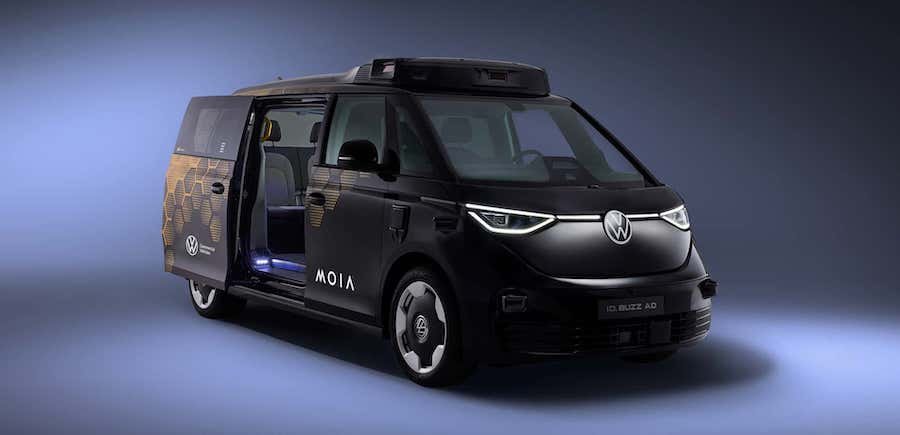It's a major milestone for the German auto giant, which had a rocky start in self-driving vehicles due to its initial backing alongside Ford in the failed startup Argo AI. But it shows that the company is still ahead of most other automakers, arguably including Tesla, in the race to deliver a robotaxi.
The ID. Buzz robotaxi, known officially as the ID. Buzz AD (for autonomous driving), is based on the long-wheelbase ID. Buzz sold in the US. The technology on board gives it a Level 4 rating on the SAE scale of self-driving capability. Level 4 means a vehicle that can operate without a human driver for extended periods, but still has some conditions - the main one typically being limited to certain pre-mapped areas, something known as geofencing.
Prototypes Already On US Roads
Volkswagen said it is still seeking full certification for the ID. Buzz AD in Europe and the US. If all goes to plan, the first service will be operated by VW's own MOIA mobility company in 2026, initially in the German city of Hamburg, where prototypes have been testing for a number of years. VW has also been testing prototypes in Austin, Texas, and a few other US locations, meaning you're just as likely to see a driverless ID. Buzz around Austin as you are a driverless Tesla Model Y.
For the US, VW doesn't plan to offer its own service. Instead, it will work with third-party mobility companies, such as Uber, with which it partnered in April. VW and Uber plan to start testing the ID. Buzz AD together later this year, ahead of the first rides being offered on the Uber network next year. Los Angeles has been confirmed as the first location.
The services are likely to initially be offered to vetted riders only, similar to the rollout strategy for the rival robotaxi service Waymo from technology giant Alphabet. They will also have a human driver behind the wheel in the first phase, Volkswagen said.
VW said it will be able to deliver a scalable “turnkey solution” for mobility companies, built around the ID. Buzz AD. This solution consists of the supply of robotaxis, infrastructure to support the service (including remote supervision), and an ecosystem platform to oversee it. Volkswagen said this strategy makes sense for the company due to its ability to build a high volume of vehicles.
The ID. Buzz AD uses a self-driving system developed in partnership with Intel's Mobileye and is equipped with a high number of sensors for maximum safety. There are 27 in total, including 13 cameras, nine LiDAR units, and five radar ones. Inside, the vehicles in their standard setup come with four passenger seats, plus an area to hold cargo. According to VW, the robotaxis will be able to handle not only urban areas but also rural roads.
Developing a safe and reliable robotaxi service continues to be a huge challenge. A number of promising companies in the segment have backed out of the race, including the aforementioned Argo AI, as well as General Motors-backed Cruise. Tesla, too, has only just started testing prototypes without anyone behind the wheel and hasn't set a firm date for the launch of a commercial service. Notably, the driverless Teslas have been Model Y crossovers, not the Robotaxi previewed last year, meaning VW has beaten Tesla to showcasing a production-ready robotaxi. Your move, Tesla.




Related News



